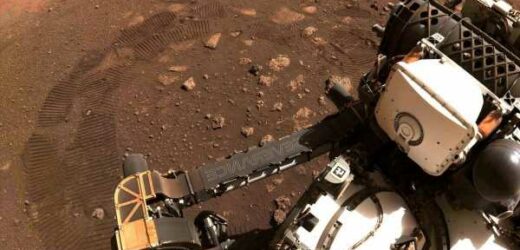After 17 months spent gathering samples inside an ancient riverbed, the NASA Perseverance rover has uncovered "intriguing" organic matter on Mars hinting at ancient life, according to the American space agency.
Known as "Percy" to the NASA team, the Perseverance rover was launched in 2020 to collect samples from the dried-out riverbed, which scientists would be the best place to find answers to the century-old Martian question – has life ever existed on Mars?
In addition to other geological specimens, we might be one step closer to the answer, as NASA announced that the rover has found two rock samples that are full of carbon-based molecules, offering more evidence that organic life might have once existed on the now-barren red planet.
The area where the rover gathered these samples is known as the Jezero Crater, a 28-mile wide divot on the martian surface where a river once joined with a lake 3.5 billion years ago.
These two rocks were described as "two of the most important samples that we’ll collect on this mission," by Professor David Shuster, one of the planetary scientists working on the $2.7bn Mars mission.
They were analysed by Percy's life detector SHERLOC, which stands for Scanning Habitable Environments with Raman & Luminescence for Organics & Chemicals.
After scraping a rock on the crater's Wildcat Ridge, believed to have formed as the ancient lake evaporated, SHERLOC found layers of organic molecules and an important chemical building block, sulphur.
Want the latest updates on close encounters, mysterious sightings and fascinating insights from scientists? Sign up to the Daily Star's Spaced Out newsletter HERE.
“The delta, with its diverse sedimentary rocks, contrasts beautifully with the igneous rocks – formed from crystallization of magma – discovered on the crater floor,” said Perseverance project scientist Ken Farley.
This rich variety of material boosts hopes that organic molecules could have thrived in this environment, he continued: “This juxtaposition provides us with a rich understanding of the geologic history after the crater formed and a diverse sample suite.
"For example, we found a sandstone that carries grains and rock fragments created far from Jezero Crater – and a mudstone that includes intriguing organic compounds.”
The presence of these organic molecules and a life-supporting environment are what scientists call a biosignature – a substance that evidences the potential existence of an environment where life could develop.
Breakthrough mission to find life on Venus launched as 'slow' NASA blasted
“In the distant past, the sand, mud, and salts that now make up the Wildcat Ridge sample were deposited under conditions where life could potentially have thrived,” said Farley.
“The fact the organic matter was found in such a sedimentary rock – known for preserving fossils of ancient life here on Earth – is important."
While this is some of the most hopeful evidence of life on Mars yet, the Perseverance team still need to get these samples back to earth to do proper analysis.
Farley continued: "However, as capable as our instruments aboard Perseverance are, further conclusions regarding what is contained in the Wildcat Ridge sample will have to wait until it’s returned to Earth for in-depth study as part of the agency’s Mars Sample Return campaign.”
Want the latest updates on close encounters, mysterious sightings and fascinating insights from scientists? Sign up to the Daily Star's Spaced Out newsletter HERE.
Source: Read Full Article






